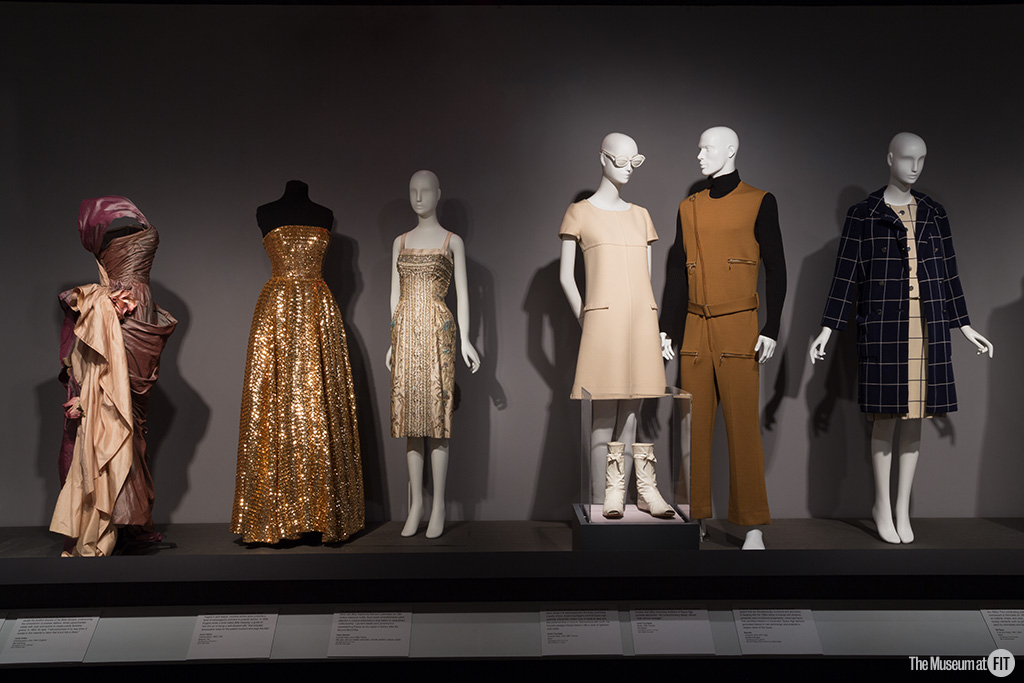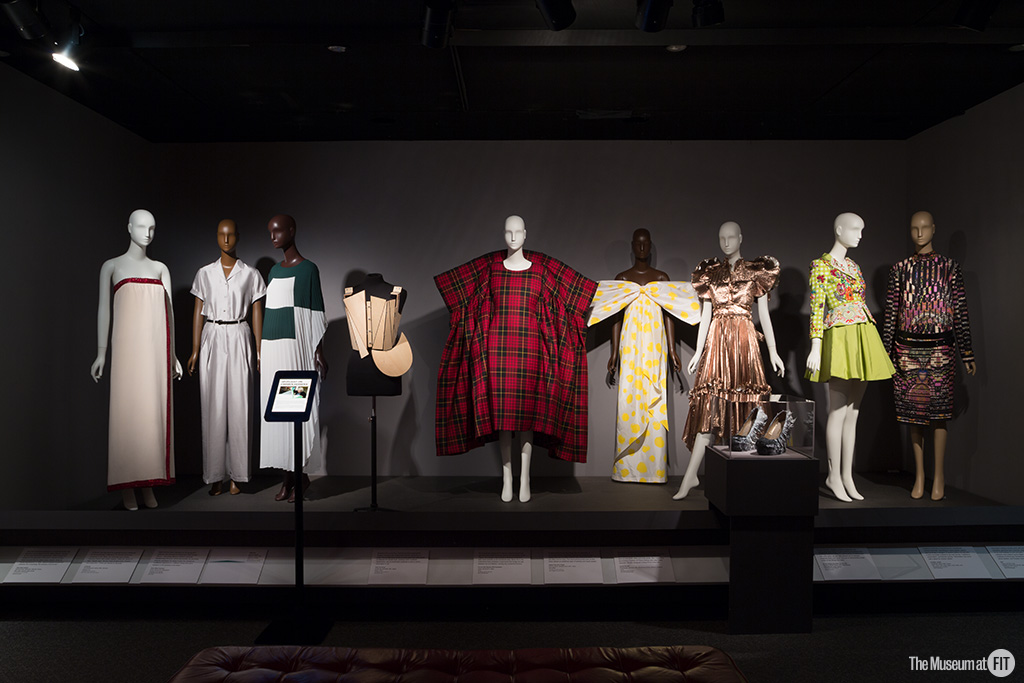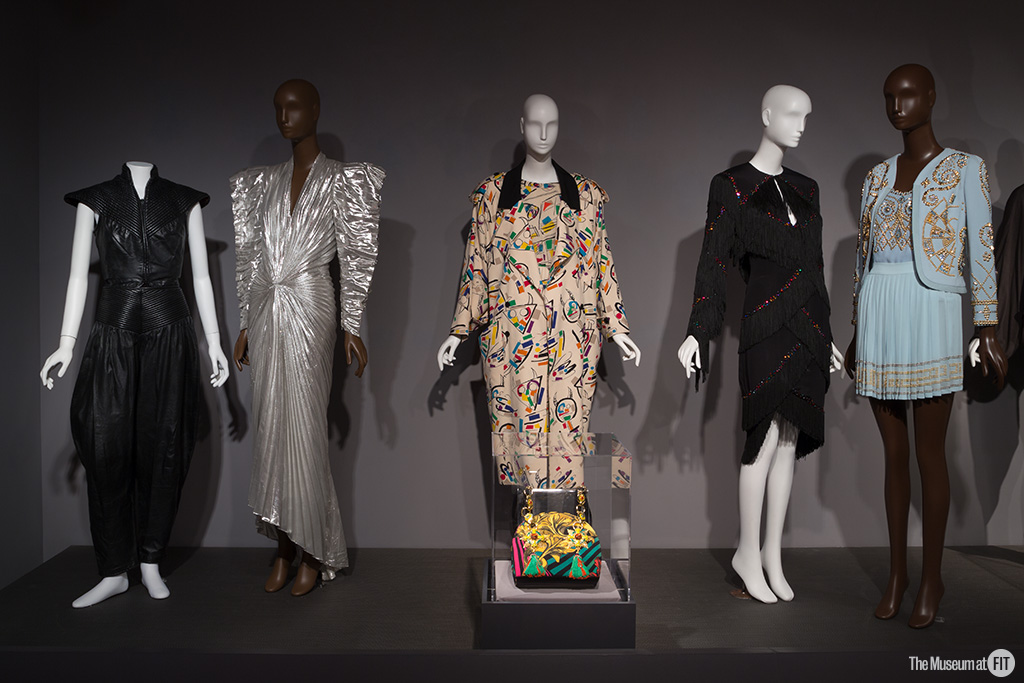Editor’s Note: The only known Black designer in this exhibition is Carly Cushnie, the Jamaican-British founder of Cushnie et Ochs. I can’t imagine this erasure to be a simple oversight. The lengthy history of ostracizing Black fashion from elite art spaces proves as much. Art curators and fashion leaders are well aware of how influential the African Diaspora is, and always has been, to both industries. The lack of effort put into recognizing and including designers of African descent is deeply troubling, yet not at all unexpected. Nonetheless, writer Hasani Malone offers a compelling review of Minimalism/Maximalism. See for yourself below.
In Newton’s Cradles, the click of two metal balls colliding will send one on the far end flying into a somersault and back down again to repeat the same motion. This constant back and forth between the swinging spheres describe Newton’s third law of motion which states that for every action, there is an equal and opposite reaction. This is the essence that curator, Melissa Marra-Alvarez, tried to capture in the Minimalism/Maximalism exhibition spending its last days at The Museum at the Fashion Institute of Technology.
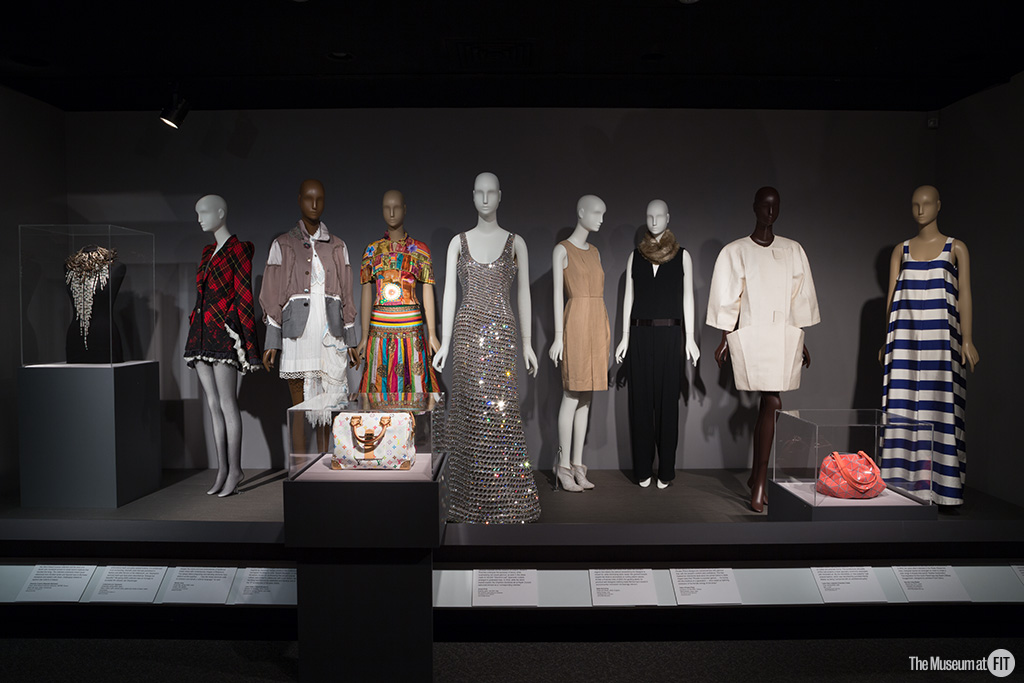
The museum notes this exhibit as the first of its kind to show the “historical interplay” between minimalism and maximalism aesthetics which have conquered fashion and sartorial expression since the 18th century. The exhibition welcomes guests in with its first two garments pointed towards the door. A light is eerily cast above them in an otherwise dark room, enclosed by black walls. One can immediately detect the differences between the Narciso Rodriguez evening dress from their Spring 2011 collection, which coexists beside the Rei Kawakubo look from Comme des Garçons’ Spring 2018 collection.
The story about the relationship between these two ends of the design spectrum is presented in chronological order starting from 1780 with a silk men’s waistcoat with gold trim and metallic embroidery, which was used to display one’s financial capital and status. Next to it stands a monochromatic green men’s suit made of silk, velvet and metallic thread, dated approximately from 1790-1800.
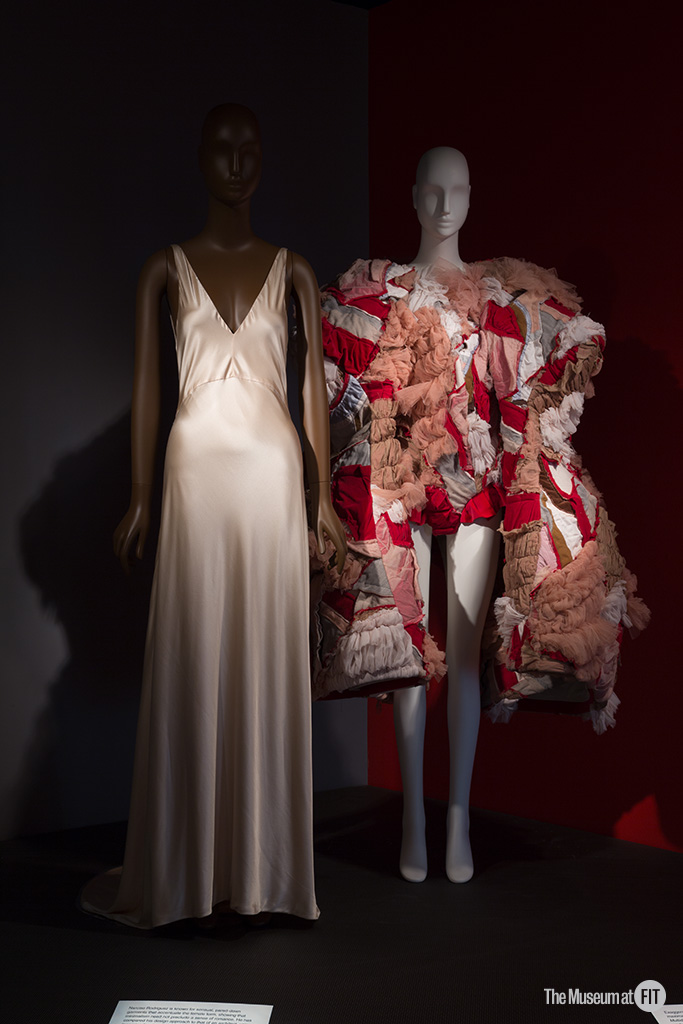
As visitors walk through the narrow hall one may note that the aesthetics truly do live by Newton’s Third Law; overt displays of wealth and character are replaced by more modest styles and vice versa.
Marra-Alvarez approaches these shifts in aesthetics by using the ever-changing social, political and economic states of Western society to contextualize the garments on display. Light reflected off the sequined evening dress of the Jazz Age styles which stood next to an equally decorated silk, ornate coat, which appropriated Chinese motifs. These looks starkly contrasted those of the 1930s during the Great Depression era, where flashy styles were rejected and replaced with more conservative looks like the black, Muriel King coat that emphasized the female form.
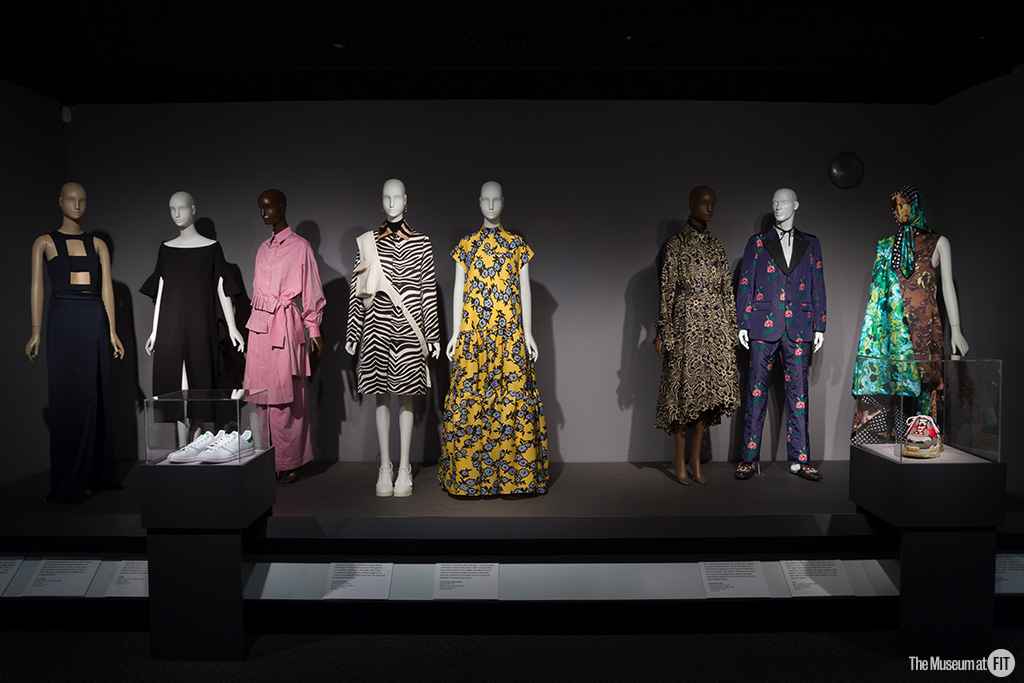
The exhibition represents cultural changes by using minimalism and maximalism as a marker and a product of those shifts. The exhibit ends with the Balenciaga Triple S sneakers, which were released in 2017 and stirred a movement of vibrantly colored, clunky and stacked sneakers. During this current wave of maximalism, in an interview with Fashionista.com, Marra-Alvarez predicts the impending rise of another wave of minimalism. But it’s safe to say that no matter which way the pendulum swings, minimalism and maximalism will always remain in style.
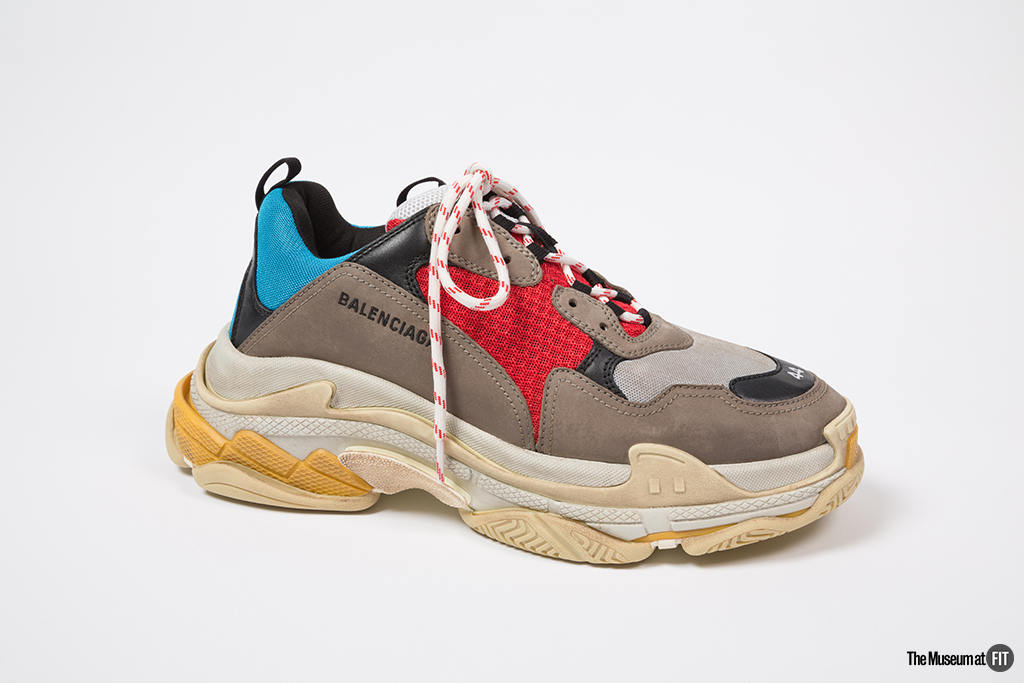
Balenciaga, Triple S sneaker, 2018, France. The Museum at FIT, museum purchase. 2018.48.1 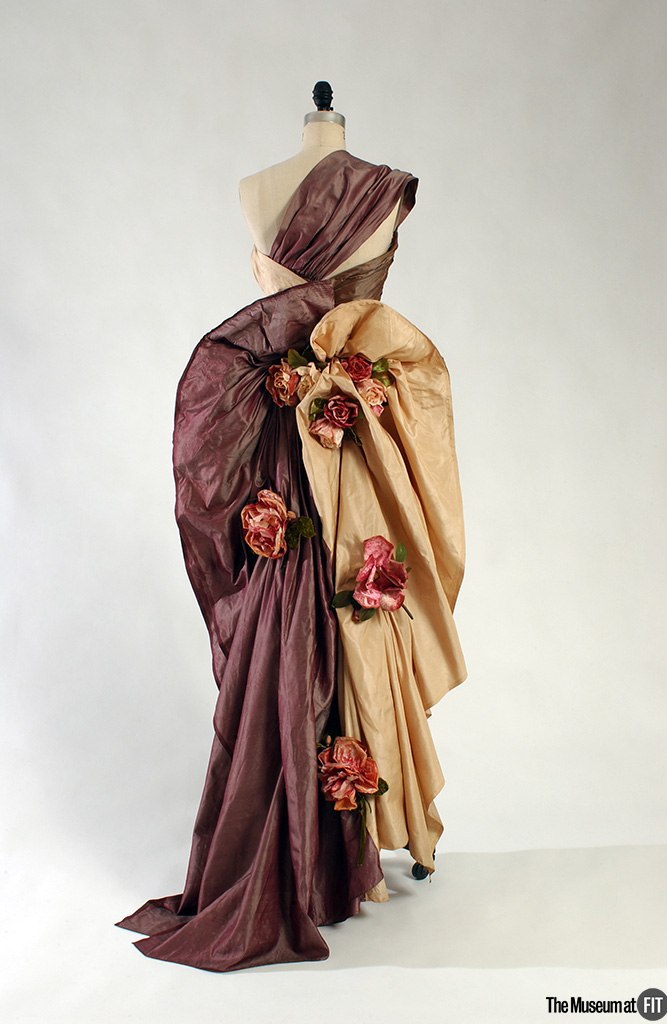
One-shoulder asymmetrical evening sheath in three shades of silk shantung, rose-beige, taupe, and lavender; boned bodice ruched crosswise at front, crisscrossed at back; long asymmetrically draped skirt with back twist forming bustle and swag; large silk roses scattered on back
